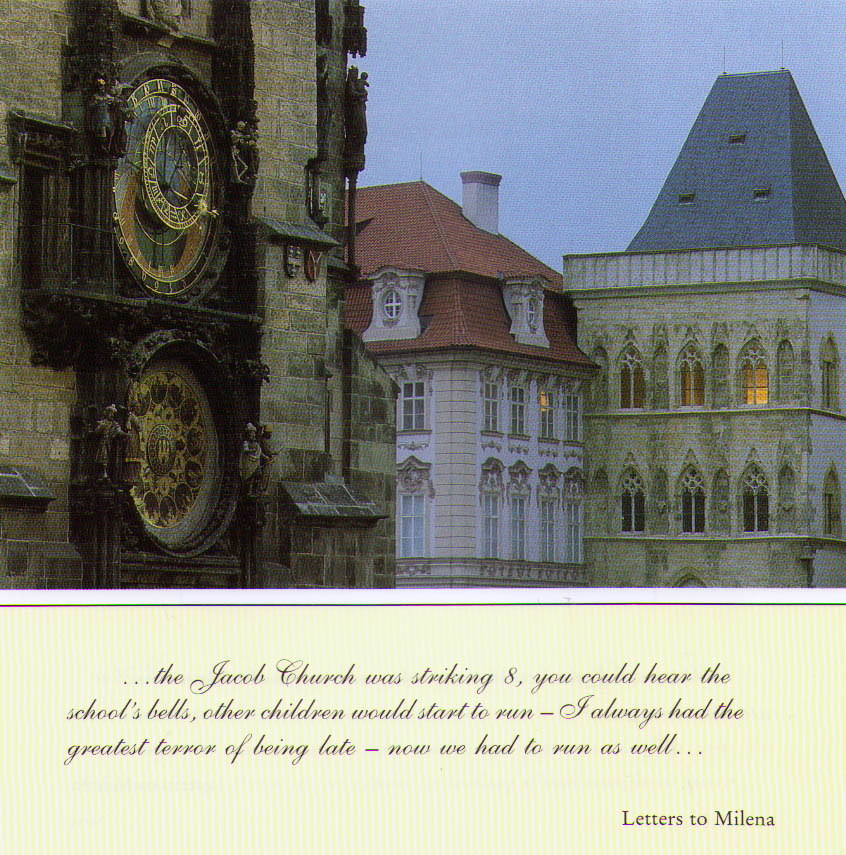 Idea, selection of quotations and photo graphics for the book: Karol Kallay, Forward: Eduard Goldstucker.
Idea, selection of quotations and photo graphics for the book: Karol Kallay, Forward: Eduard Goldstucker.
In front of us is the book “Franz Kafka and Prague”, a piece of art introducing Kafka’s words: “I write differently to how I speak and I speak differently to how I think, and so it continues, right to the deepest darkness.” (Letters to Ottla and Family).
And the other his words: “I did not portray people. I did not tell stories, they’re just images, only images.”
With these statements it is explained the creative personality of Kafka. And it is understandable.
Franz Kafka was born and lies buried in Prague. It was his home for virtually his whole lifespan; only a few months brfore his death did he, after years of hesitation, make up his mind to leave it.
Prague bore the specific character. At Kafka’s time Prague became the capital of the newly created Czechoslovak Republic. But even the pre-1918 Prague was much more than simply a provincial city. It was the capital of the Kingdom Bohemia, one of the historical constituents of Austria-Hungary, and the metropolis of that empire’s economically most developed nation, whose national emancipation had just attained its highest phase.
Watch the photo gallery “Franz Kafka and Prague”:
I, personally, can relate to Prague. While back long ago, visiting its mysterious old town streets, Alchemists and such, full of strange bunch of people around, odd feelings came under the skin:”something could happen here, at this spot right now, and one need to run away as soon as possible”.
Why arose such feelings?
I did not know. And I do not know now. Then I was not familiar with Kafka’s works. My virtu was not refined yet, perhaps.
Now I am. I can grasp his thoughts through the background and the environment of the city.
I disagree with the explanation of the historic events via the complicated, precarious coexistence of the city’s three ethnic-religious components: the Czechs, the Germans and the Jews.
There is more than this to it. Kafka’s world is richer than entanglement to one of the groups. His world is going beyond. Images, images, images…
Physically he lived in Prague that looked then as back at more than thousand years of recorded history.
Reading the quotations, thorughly selected by Karol Kallay and watching his photos of Prague, one’s thoughts were stretching to the memories of the past, minus present and without the future.
All together, the book helps a thinking person to connect to the unusual, creative world of Franz Kafka.
